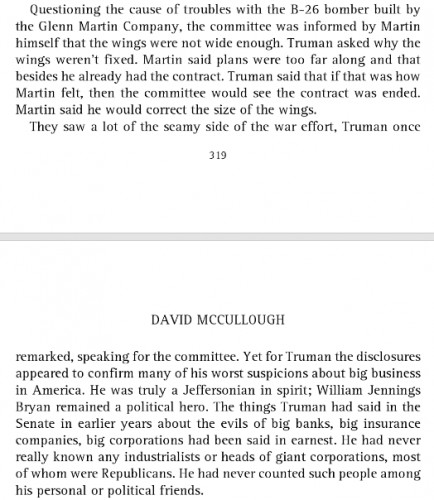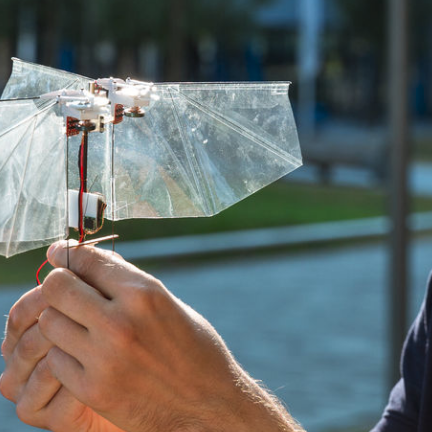This title comes from a recent interview with Oregon’s Senator Wyden
Mark Zuckerberg has repeatedly lied to the American people about privacy. I think he ought to be held personally accountable, which is everything from financial fines to—and let me underline this—the possibility of a prison term. Because he hurt a lot of people. And, by the way, there is a precedent for this: In financial services, if the CEO and the executives lie about the financials, they can be held personally accountable.
Often in 2018 I made similar suggestions, based on the thought that our security industry would mature faster if a CSO personally can be held liable like a CEO or CFO (e.g. post-Enron SOX requirements):
And at Blackhat this year I met with Facebook security staff who said during the 2016-2017 timeframe the team internally knew the severity of election interference and were shocked when their CSO failed to disclose this to the public.
Maybe the Senator putting it all on the CEO today makes some sense strategically…yet also begs the question of whether an “officer” of security was taking payments enough to afford a $3m house in the hills of Silicon Valley while intentionally withholding data on major security breaches during his watch?
Given an appointment of dedicated officer in charge of security, are we meant to believe he was taking a big salary only to be following orders and not responsible personally? Don’t forget he drew press headlines (without qualification) as an “influential” executive joining Facebook, while at the same time leaving Yahoo because he said he wasn’t influential.
To be fair he posted a statement explaining his decision at the time, and it did say that safety is the industry’s responsibility, or his company’s, not his. Should that have been an early warning he wasn’t planning to own anything that went awry?
I am very happy to announce that I will be joining Facebook as their Chief Security Officer next Monday…it is the responsibility of our industry to build the safest, most trustworthy products possible. This is why I am joining Facebook. There is no company in the world that is better positioned to tackle the challenges…
There also is a weird timing issue. The start to the Russian campaign is when Facebook brings on the new CSO. Maybe there’s nothing to this timing, just coincidence, or maybe Russians knew they were looking at an inexperienced leader. Or maybe they even saw him as “coin-operated” (a term allegedly applied to him by US Intelligence) meaning they knew how easily he would stand down or look away:
- June 2015: Alex Stamos abruptly exits his first ever CSO role after failing to deliver on year-old promises of end-to-end encryption, and also failing to disclose breaches**, to join Facebook as CSO. Journalists later report this as “…beginning in June 2015, Russians had paid Facebook $100,000 to run roughly 3,000 divisive ads to show the American electorate”
- October 2016: Zuckerberg tries to shame outside critics/investigators and claim no internal knowledge… “To think it influenced the election in any way is a pretty crazy”
- January 2017: US Intelligence report conclusively states Russia interfered in 2016 election
- July 2017: Facebook officially states “we have seen no evidence that Russian actors bought ads on Facebook”
- September 2017: Facebook backtracks and admits it knew (without revealing exactly how soon) Russian actors bought ads on Facebook
- September 2017: Zuckerberg muddies their admission by saying “…investigating this for many months, and for a while we had found no evidence of fake accounts linked to Russia running ads”, which focuses on knowledge of fake accounts being used, rather than the more important knowledge Russia was running ad campaigns
- September 2017: Zuckerberg tries to apologize in a series of PR moves like saying “crazy was dismissive and I regret it” and asking for forgiveness
- October 2017: Facebook’s Policy VP issues a “we take responsibility” statement
- October 2017: Facebook admits 80,000 posts from 2015 (i.e. from when Stamos started as CSO) all the way to 2017 (i.e. when Stamos was still CSO) reached over 120 million people. Stamos brands himself both as the influential officer in charge of uncovering harms yet also a wall flower paid an officer salary to not speak out. It does somehow come back to the point that the Russian Internet Research Agency allegedly began operations only after Stamos’ joined. Even if it started before, though, he definitely did not disclose what he knew when he knew it. His behavior echoes a failure to disclose massive breaches while he was attempting his first CSO role in Yahoo! (see step 1 above)
Given the security failures from 2015 to 2017 we have to seriously consider the implications of a sentence that described Stamos’ priors, which somehow are what led him into being a Facebook CSO
At the age of 36, Stamos was the chief technology officer for security firm Artemis before being appointed as Yahoo’s cybersecurity chief in March 2014. In the month of February, Stamos in particular clashed with NSA Director Mike Rogers over decrypting communications, asking whether “backdoors” should be offered to China and Russia if the US had such access.
There are a couple problems with this paragraph, easily seen in hindsight.
First, Artemis wasn’t a security firm in any real sense. It was an “internal startup at NCC Group” and a concept that had no real product and no real customers. As CTO he hired outside contractors to write software that never launched. This doesn’t count as proof of either leadership or technical success, and certainly doesn’t qualify anyone to be an operations leader like CSO of a public company.
Second, nobody in their right mind in technology leadership let alone security would ask if China and Russia are morally equivalent to the United States government when discussing access requests. That signals a very weak grasp of ethics and morality, as well as international relations. I’ve spoken about this many times.
If the U.S. has access it in no way has implied other governments somehow morally are granted the same access. Moreover it was very publicly discussed in 2007 because Yahoo’s CEO was told to not give the Chinese access they requested (when Stamos was 28):
An unusually dramatic congressional hearing on Yahoo Inc.’s role in the imprisonment of at least two dissidents in China exposed the company to withering criticism and underscored the risks for Western companies seeking to expand there. “While technologically and financially you are giants, morally you are pygmies,” Rep. Tom Lantos (D., Calif.)
If anything these two points probably should have disqualified him to become CSO of Facebook, and that’s before we get into his one-year attempt to be CSO at Yahoo! that quickly ended in disaster.
In 2014, Stamos took on the role of chief information security officer at Yahoo, a company with a history of major security blunders. More than one billion Yahoo user accounts were compromised by hackers in 2013, though it took years for Yahoo to publicly report…Some of his biggest fights had to do with disagreements with CEO Marissa Mayer, who refused to provide the funding Stamos needed to create what he considered proper security…
Let me translate. Stamos joined and didn’t do the job disclosing breaches because he was campaigning for more money. He was spending millions (over $2m went into prizes paid to security researchers who reported bugs). While his big-spend bounty-centric program was popular among researchers, it didn’t build trust among customers. This parallels his work as CTO, which didn’t build any customer trust at all.
The kind of statements Stamos made about Artemis launching in the future (never happened) should have been a warning. Clearly he thought taking over a “dot secure” domain name and then renting space to every dot com in the world was a lucrative business model (it wasn’t).
I’m obviously not making this up as you can hear him describe rent-seeking with a straight face. His business model was to use a private commercial entity to collect payments from anyone on the Internet in exchange for a safety flag to hang on a storefront, in a way that didn’t seem to have any fairness authority or logical dispute mechanism.
Here is a reporter trying to put the scheming in the most charitable terms:
In late 2010, iSEC was acquired by the British security firm, NCC Group, but otherwise the group continued operating much as before. Then, in 2012, Stamos launched an ambitious internal startup within NCC called Artemis Internet. He wanted to create a sort of gated community within the internet with heightened security standards. He hoped to win permission to use “.secure” as a domain name and then require that everyone using it meet demanding security standards. The advantage for participants would be that their customers would be assured that their company was what it claimed to be—not a spoof site, for instance—and that it would protect their data as well as possible. The project fizzled, though. Artemis was outbid for the .secure domain and, worse, there was little commercial enthusiasm for the project. “People weren’t that interested,” observes Luta Security’s Moussouris, “in paying extra for a domain name registrar who could take them off the internet if they failed a compliance test.”
Imagine SecurityScorecard owning the right to your domain name and disabling you until you pay them to clean up the score they gave you. Dare I mention that a scorecard compliance engine is full of false positives and becomes a quality burden that falls on the companies being scanned? Again, this was his only ever attempt at being a CTO (before he magically branded himself a CSO) and it was an unsuccessful non-starter, a fizzle, a dud.
From that somehow he pivoted into a publicly traded company as an officer of security. Why? How? He abruptly quit Artemis by taking on a CSO role at Yahoo, demanding millions for concept projects more akin to a CTO than CSO. He even made promises upon taking the CSO role to build features that he never delivered. Although I suppose the greater worry still is that he did not disclose breaches.
It was after all that he wanted to be called CSO again, this time at Facebook. That is what Wyden should be investigating. I mean I’m fine with Wyden making a case for the CEO to be held accountable as a starting point, the same way we saw Jeff Skilling of Enron go to jail.
It makes me wonder aloud again however if the CFO of Enron, Andrew Fastow, pleading guilty in 2004 to two counts of conspiracy to commit securities and wire fraud…is an important equivalent to a CSO of Facebook pleading guilty to a conspiracy to commit breach fraud.
Stamos says he deserves as much blame as anyone else for Facebook being slow to notice and stamp out Russian meddling in the 2016 presidential election
Ironically Stamos, failing to get anywhere with his three attempts at leadership (Artemis, Yahoo and Facebook) has now somehow reinvented himself (again with no prior experience) as an ethics expert. He has also found someone to fund his new project to the tune of millions, which at Blackhat some Facebook staff reported to me was his way to help Facebook avoid regulations by laundering their research as “academic”.
It will be interesting to see if Wyden has anything to say about a CSO being accountable in the same ways a CFO would be, or if focus stays on the CEO.
In any case, after a year of being CSO at Yahoo and three years of being CSO at Facebook, Stamos’ total career amassed only four years as a head of security.
Those four years unmistakably will be remembered as one person who sat on some of the biggest security operations lapses in history. And his 2015 tout he was taking an officer role because “no company in the world is better positioned” to handle challenges of safety continues to produce this legacy instead:
Another month, another Facebook data breach.
Or to put it another way, here is how outside investigators described the Facebook CSO legacy:
Paul-Olivier Dehaye, a data protection specialist, who spearheaded the investigative efforts into the tech giant, said: “Facebook has denied and denied and denied this. It has misled MPs and congressional investigators and it’s failed in its duties to respect the law.
“It has a legal obligation to inform regulators and individuals about this data breach, and it hasn’t. It’s failed time and time again to be open and transparent.”
** The Class-action lawsuit against Yahoo security practices under Stamos provides the following timeline:
2014 Data Breach: In November 2014, malicious actors were able to gain access to Yahoo’s user database and take records of approximately 500 million user accounts worldwide. The records taken included the names, email addresses, telephone numbers, birth dates, passwords, and security questions and answers of Yahoo account holders, and, as a result, the actors may have also gained access to the contents of breached Yahoo accounts, and thus, any private information contained within users’ emails, calendars, and contacts.
2015 and 2016 Data Breach: From 2015 to September 2016, malicious actors were able to use cookies instead of a password to gain access into approximately 32 million Yahoo email accounts.
Update September 7th, 2019:
In another meeting with ex-Facebook staff I was told when “CEO and CSO are nice people” that should mean they don’t go to jail for crimes, because nice people shouldn’t go to jail.
This perspective has me wondering what the same people would say if I told them Epstein had a lot of friends who said he was nice. I mean their “nice” get out of jail free card suggests to me some kind of context change might help.
I will raise the issue in my CS ethics lectures first using an example outside the tech industry: Should the captain of sunken ship face criminal investigation for saving self as 34 passengers died in an early morning fire? Then I will ask about behavior of the CSO on deck during Yahoo and Facebook breaches.








